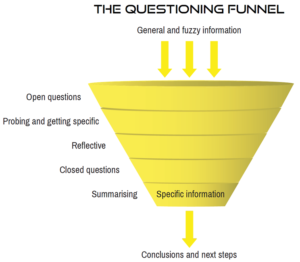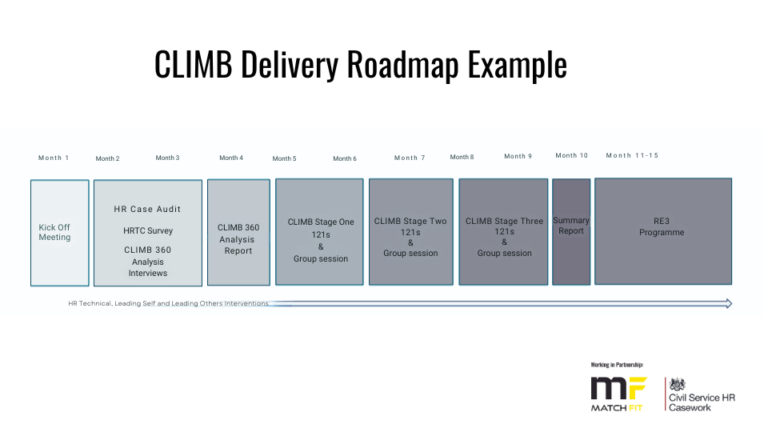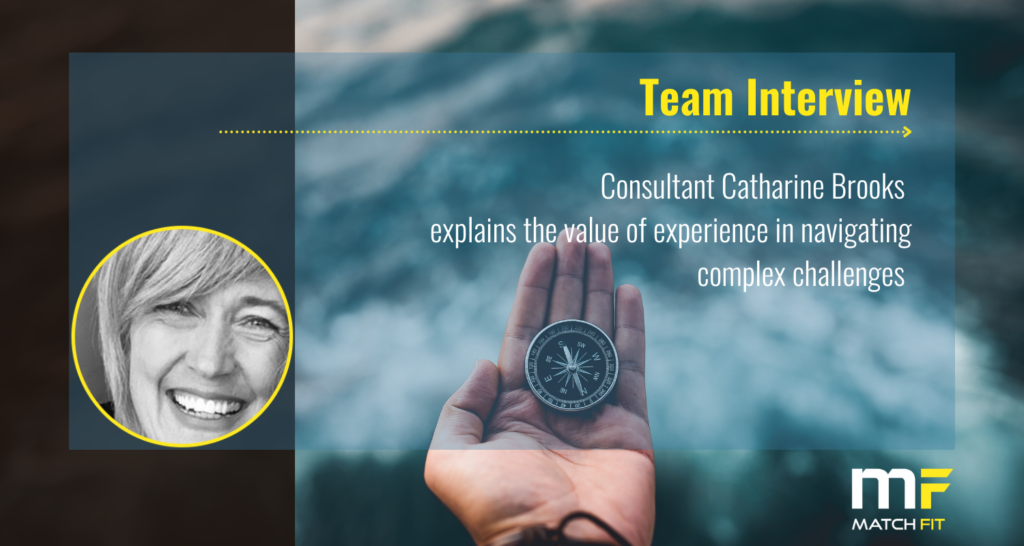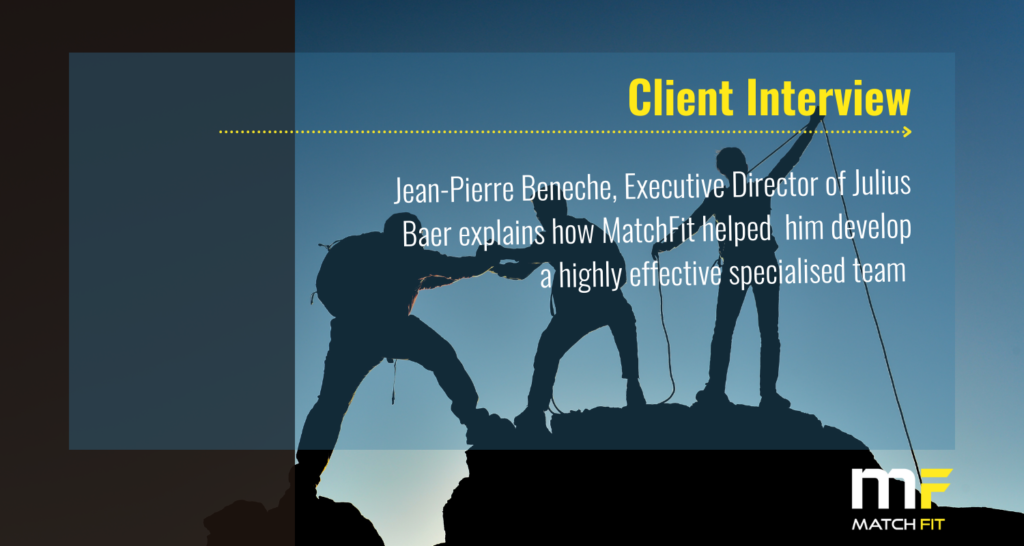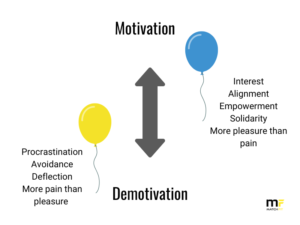Creating a Legacy of Leadership: An Interview with Sally Gibson
With the CLIMB Shadow ExCo programme at its midpoint, we spoke with Sally Gibson, Managing Director of Dawleys, a multi award-winning fulfilment and communications specialist. We explored her motivations for undertaking the programme and its current progress, shedding light on how it aims to transform the company’s leadership dynamics.
The motivation behind the programme
“The initiative stemmed from an internal programme called ‘Scaling Up,’ aimed at steering Dawleys’ growth and development,” Sally shared. “Last year, we started working on ‘Scaling Up’ to map out how we wanted to steer the business toward growth,” she explained. “A key outcome was the need for a ‘Vivid Vision’ to define the company’s future goals. This vision helped us ask crucial questions about where we want to be in three years and also created a Big Hairy Audacious Goal for 2040,” she added. This visionary approach led to the creation of the ‘Dawleys Flywheel,’ focusing on enhancing efficiency across various business areas.
To support this flywheel, particularly in attracting new customers, business efficiency, delivering excellent customer service and developing her team, Sally turned to the CLIMB Shadow ExCo Programme. “A flywheel gains momentum when all its parts work in harmony, and we needed a programme like CLIMB to ensure our team’s learning and development supported the flywheel to move in the right direction, enabling us to grow as a business”.
Recognising a gap in leadership development, Sally saw the necessity for a robust management team to support Dawleys’ growth. Conversations with Bradley and Tim from MatchFit highlighted the need for a programme to enhance commercial awareness and leadership skills. “I realised we needed to invest in our leadership capabilities to prepare for future challenges and my eventual retirement,” Sally said. “Leaving a legacy of strong leadership is crucial for the business’s continuity.”
Implementing the Shadow ExCo programme
Participants in the programme are working on three areas of leadership Purpose, Mastery and Autonomy, supported by one-to-one coaching sessions and the opportunity to work on key projects that directly relate to improving the Dawley’s flywheel. The team have been paired and assigned to five key projects supported by MatchFit’s facilitator, Tim Forman. These projects cover essential areas such as new business development, employee experience, business efficiency, employee recognition, and customer experience. “The idea was to use real-life projects to drive the business forward, not just theoretical exercises,” Sally explained.
One notable project focuses on developing a sales playbook. “We’re working on creating a structured approach to attract new business and identify key markets,” Sally shared. Another project aims at improving the employee experience through better recruitment, onboarding, and development processes. “We also have a project on business efficiency using the ‘two-second lean’ methodology, which encourages continuous small improvements,” she added.
The programme has also fostered initiatives for employee recognition and customer experience. “We want to ensure our team feels valued and motivated, which in turn enhances the customer experience,”.
Real-life applications and outcomes
“Real-life projects within the programme are so important” Sally emphasised. “Participants tackle actual business issues, gaining practical experience and driving the company forward. It’s about giving them the chance to work on genuine challenges and learn from the process,” she said. “Despite the challenges, the support from MatchFit has been crucial in boosting confidence and fostering a proactive mindset.”
The programme has already yielded positive outcomes. The five teams have launched various initiatives, such as improving the new employee onboarding experience and organising company events. “Our employee benefits team came up with the idea of celebrating key days such as Easter and Employee Recognition Day. As a multi-site organisation it’s important to regularly bring the 70-strong team together to meet and mingle over cakes and coffee,” Sally recounted. “A WOW board has also been created to recognise daily achievements by team members, enabling anyone to give recognition and a ‘shout out’ to other team members who have done something great.”
Aligning real life projects to the training programme has had many benefits for both the teams and the company. “They’ve shown great initiative, and the changes they’ve implemented are already making significant improvements to our website, our onboarding, our employee engagement. They’re making our processes more efficient” Sally enthused.
Key learnings and adaptability
The initial goals often evolved, with the programme coming to focus more on practical applications. “Initially, it was about leadership development, but it quickly also became about making our flywheel work,” she explained. “The Shadow ExCo has helped participants understand the importance of clear objectives and alignment with company values. They’ve learned that successful projects must fit within our vision and core values,” she said.
This learning environment allows for mistakes and growth, supported by coaching from MatchFit. “Some participants have faced challenges, but it’s all part of the learning process,” Sally noted. “For example, our employee benefit project team learned valuable lessons about managing expectations and aligning initiatives with company goals.”
The programme has been particularly effective in fostering a sense of ownership among participants. “By making everyone apply for their place in the programme, we ensured that each participant was genuinely committed from the start,” Sally explained. This commitment has translated into a proactive approach to tackling their projects. “Some of the more junior members, who had never faced such high expectations before, have really stepped up,” she said. “Even when they made mistakes, it was in a safe environment where they could learn and grow.”
Measuring success and looking ahead
Success will be measured by the delivery and continuation of the projects post-programme. The development of team leaders and their ability to manage themselves and others will be crucial indicators. “We’ll be looking at how well these projects continue after the programme ends and how the new leaders develop their teams,” Sally said.
For Sally, creating a lasting leadership programme is vital to ensure Dawleys’ future success, adapting to changes and maintaining the company’s growth trajectory. “We need a leadership programme with longevity that can adapt to new technologies and market shifts,” she emphasised. ‘’Dawleys’ success has been built on our ability to quickly adapt to market conditions, new technologies, and innovate solutions’’.
Sally highlighted the importance of a continuous leadership development approach, ensuring Dawleys remains adaptable and successful in the years to come. “MatchFit’s support has been instrumental in fostering a leadership mindset that can navigate future challenges,” she said. “I want to leave a legacy where Dawleys can continue to thrive and grow, driven by a strong and capable leadership team.”
Creating positive change for the future
Looking forward, Sally is optimistic about the programme’s long-term impact. “By the end of the Shadow ExCo, participants will have developed skills in decision-making, strategic thinking, and leadership,” she said. “These skills are essential for Dawleys’ continued growth and success.”
Sally is also keen to ensure that the leadership programme remains adaptive. “Business environments are constantly changing, and we need a leadership methodology that can evolve with these changes,” she explained. “Our goal is to create a culture of continuous improvement and adaptability.”
Identifying standout moments
Sally reflected on some standout moments from the programme. “Bradley, MatchFit’s MD, shared his personal journey during the first workshop, which was incredibly inspiring for everyone,” she said. “Hearing about his struggles with dyslexia and how he overcame them resonated deeply with the participants.”
Another memorable moment was the strengths analysis workshop. “Participants were initially hesitant, but discovering their strengths was a significant confidence boost,” Sally shared. “One team member, who initially thought he was ‘rubbish at everything,’ was surprised to find he had many outstanding strengths. It was a transformative experience for him.”
The Mastery workshop was particularly challenging for the team. “This workshop focussed on strategic thinking, decision-making, and assertiveness, areas that some participants find difficult,” Sally explained. “However, it’s these challenges that often lead to the most growth.”
Ensuring legacy and continuity
Sally is committed to leaving a lasting legacy at Dawleys. She emphasised the importance of starting early. “We need to be working on this now, not six months before I retire,” Sally said. “Developing a leadership programme with longevity is essential for the company’s future success.”
“The power of the CLIMB Shadow ExCo programme has been transformative,” Sally concluded. “MatchFit has been instrumental in creating a leadership mindset that can adapt to whatever the future holds,” she said. “I’m confident that the skills and insights gained through this programme will ensure Dawleys’ continued success and growth.”
The CLIMB Shadow ExCo programme is more than just a leadership development initiative; it’s a catalyst for change, fostering a culture of continuous improvement and adaptability at Dawleys. Sally Gibson’s vision and commitment to leaving a lasting legacy are driving this transformative journey, ensuring that Dawleys remains a leader in the industry for years to come.
If you’d like to learn more about our MatchFit programmes, take a look at our information pages here, or why not get in touch? [email protected] or call +44 (0) 7858 775 249
Creating a Legacy of Leadership: An Interview with Sally Gibson Read More »



